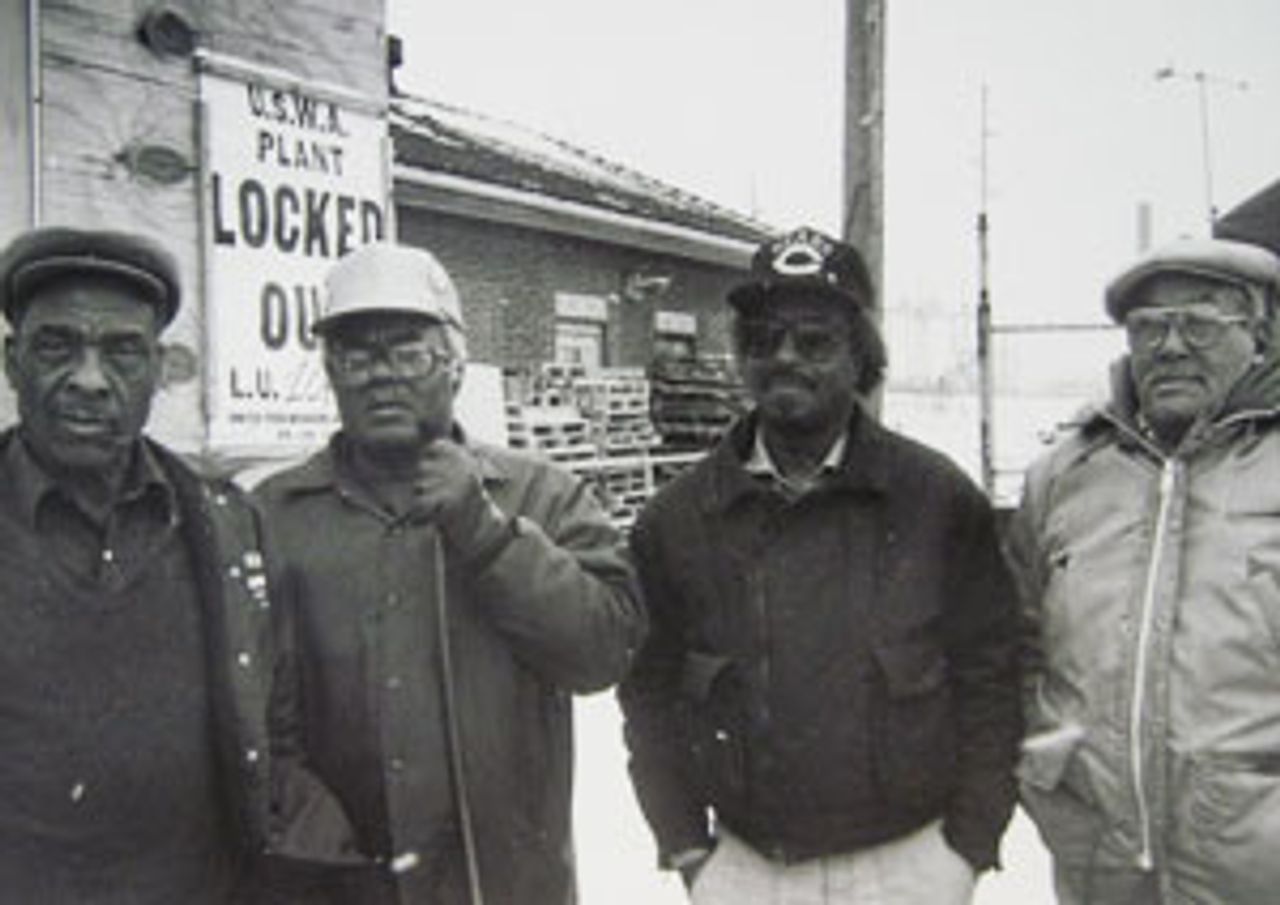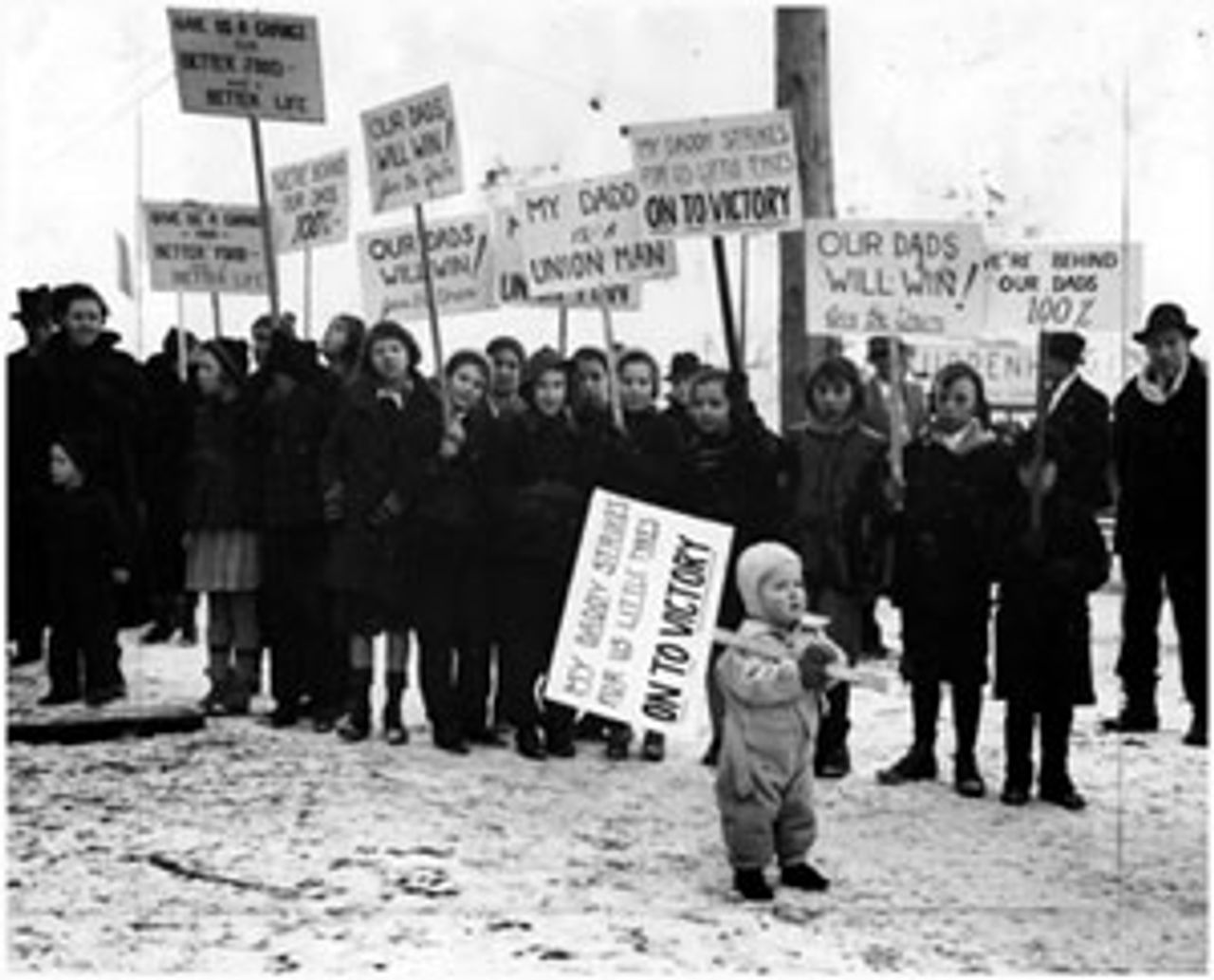This Week in History provides brief synopses of important historical events whose anniversaries fall this week.
25 Years Ago | 50 Years Ago | 75 Years Ago | 100 Years Ago
25 years ago: USWA sells out US steelworkers’ strike
 USX steelworkers at the Gary Works in Indiana
USX steelworkers at the Gary Works in Indianamaintain picketing during the vote count
After talks conducted under a total news blackout, United Steel Workers of America (USWA) President Lynn Williams announced a tentative agreement with USX (US Steel) on January 17, 1987, in an attempt to impose a sellout agreement and end a five-and-a-half-month lockout involving 42,000 workers.
Among other demands, USX insisted on wage cuts of nearly $3.50 and 10-hour to 12-hour workdays. With about half of the locked-out workers already temporarily laid off, US Steel was demanding changes in work rules that would allow it to reduce its workforce to 14,000. As J. Bruce Johnston, the corporation’s vice president, told the workers, “There are not enough seats in the steel lifeboat for everybody.”
The decline of the steel industry was already far advanced. In 1978, there were 700,000 steelworkers in the US. By 1984, the number had fallen to 140,000. Plant closures and mass layoffs devastated cities, towns and regions—Pittsburgh; South Chicago; Gary, Indiana; Buffalo, New York; Youngstown, Ohio; Minnesota’s Iron Range; Northern West Virginia, among others.
The union isolated the USX workers from workers in the rest of the industry, including 56,000 LTV pensioners facing the destruction of pension and health benefits, Babcock & Wilcox workers battling strike-breaking, and workers at Bethlehem Steel and other corporations who were to face their own assault on jobs, pensions and working conditions. Prior to the USX lockout, Williams facilitated USX management’s plans by agreeing to the breakup of the master contract in basic steel and bargaining with each of the major steel companies separately.
The Workers League, predecessor of the Socialist Equality Party, intervened in the lockout in several states, calling for an industry-wide strike of all steelworkers to fight for the nationalization of the mills and mines. It campaigned for a rejection of the sellout contract and interviewed steelworkers at several USX plants.
A steelworker at the Gary works said, “If we were going to settle for this, we could have gone back months ago with their first offer. We should have all fought together, all of the steelworkers like in 1959. Williams sold us out.”
50 years ago: Kennedy signs order allowing federal collective bargaining
On January 17, 1962, President John F. Kennedy signed Executive Order 10988, which for the first time granted federal government workers the right to bargain collectively and affirmed their right to join unions. At the same time, the order strengthened the legal prohibition of strikes by federal workers, disqualifying any union that even “asserts the right to strike against the Government of the United States” or “advocates the overthrow of the constitutional form of Government in the United States.”
The order came in response to a growing tide of militancy among government workers, who had been engaging in illegal strikes and organizing activities at the federal, state and local levels and in the public schools. The defiant mood among government workers came on the heels of a series of strikes, contract rejections and wildcat walkouts among workers in basic industry, including auto workers, steel workers and transportation workers. This reemergence of working class militancy in the US belied the carefully cultivated image of the complacent, prosperous and conservative American worker.
Kennedy’s order aimed to arrest the mood of labor militancy among federal workers and bolster the conservative AFL-CIO bureaucracy. By the late 1950s, union membership in the US was already falling. Between 1960 and 1963, the AFL-CIO suffered a net loss of half a million members. The decline was caused by falling employment in industries such as steel and auto. The rapid expansion of union membership among government workers partially masked this process: between 1955 and the early 1970s, union membership among government workers increased from 400,000 to 4 million.
75 years ago: Flint sit down strikes escalates beyond GM
 Jarvis Johnson 2, son of Kermit Johnson,
Jarvis Johnson 2, son of Kermit Johnson,outside Fisher No. 1, January 10, 1937
The week starting January 16, 1937 opened with the announcement of a truce between General Motors (GM) and the United Automobile Workers (UAW). Bargaining would begin in earnest on wages, hours and working conditions. Under the truce, GM would recognize the UAW as the sole representative of GM employees and the union would instruct its members to vacate the production facilities they were occupying.
Almost immediately, the truce fell apart. GM continued to scheme with George Boysen, the president of the Flint Alliance, a scab outfit organized by local businessmen with the connivance of GM. The UAW accused GM of double-crossing the union, and the workers who occupied the Fisher plants in Flint refused to end their occupation until the dispute was won. The 2,000 National Guardsmen menacing the strikers were ordered back to their posts.
On the night of January 18, workers escalated the strike by picketing the Briggs Manning Company in Detroit. Briggs made parts for the Lincoln Motor Car Company and the Dodge Division of Chrysler. In addition to the Briggs workers, some 2,000 UAW members arrived and blocked the factory entrance. Despite the concerted efforts of hundreds of police wielding clubs and using tear gas, the workers were successful and the factory was ordered shut to prevent further mass unrest.
Meanwhile, the sit-down strikes at GM went from strength to strength. The Automotive Daily News revealed that GM had completely ceased production. Forty GM plants had been closed across ten states, with almost 135,000 workers out on strike.
100 years ago: German elections marked by SPD success
 Rosa Luxemburg
Rosa LuxemburgOn January 20, 1912, the second and final round of voting in the German parliamentary election began, concluding on January 25. As a result of the election, the Social Democratic Party (SPD) became the largest party in the Reichstag, winning 110 of 397 seats. The SPD had won just 43 seats in the 1907 election, when it had been the target of a right-wing campaign aimed at intimidating any opposition to Germany’s militarist policies abroad.
While the growth of support for the SPD expressed a radicalization of the working class, the 1912 election campaign also revealed the increasing prominence of a nationalist and reformist tendency, largely composed of trade union bureaucrats, within the party. At the behest of these layers, and fearful of a repeat of the 1907 election, the SPD formed an electoral bloc with the “Progressive Liberals,” and focused its campaign on policies that were considered inoffensive to this constituency, such as opposition to taxes affecting consumers.
The SPD avoided the issue of Germany’s imperialist machinations. Fearing the electoral impact, the party had taken a muted position during the height of the Moroccan crisis in 1911, when Germany’s reckless militarism had threatened conflict with France. Despite this dilution of the SPD’s policies, many liberals voted for conservative candidates rather than the SPD ticket, even though it was formally backed by the Progressive Liberals.
Immediately after the elections, Rosa Luxemburg, a representative of the SPD’s revolutionary tendency, pilloried the “joyful faith that liberalism’s boasts have inspired in many Social Democrats.” She called for the party to go on the offensive on universal suffrage, opposition to imperialism, and the social issues facing the working class, concluding: “Let us pursue the independent, bold and fundamental tactics of class struggle, for this is how we must demonstrate to the International how the proletariat can exploit parliamentary means to achieve the ultimate revolutionary goal of Social Democracy.”
